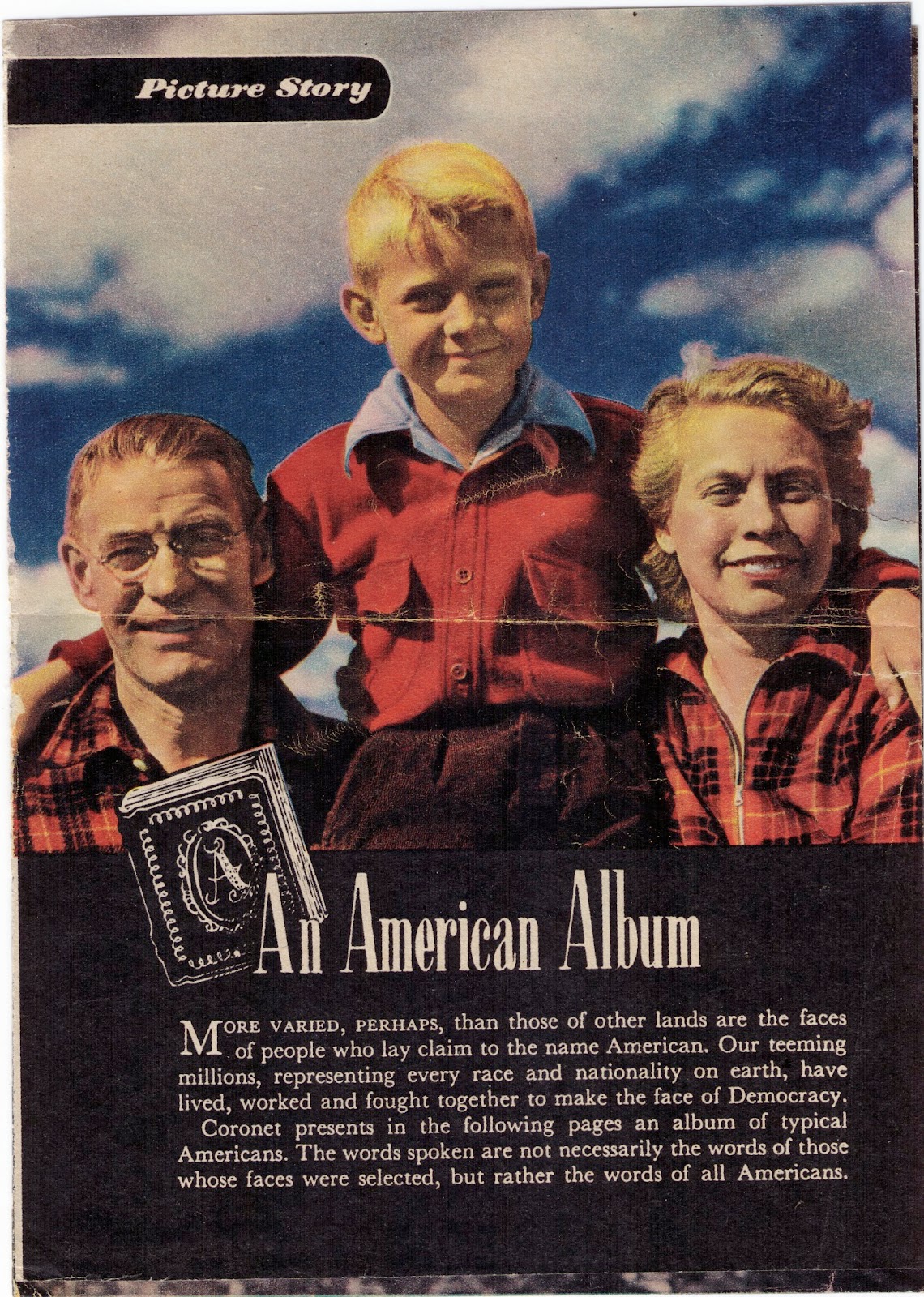A final item has emerged from the EJZ Army folder.
Eugene kept these seven pages from a Coronet magazine.
The photoessay starts off with "More varied, perhaps, than those of other lands are the faces of people who lay claim to the name American." From the perspective of our day, the faces in the series immediately strike us as less varied than what we expect, obviously. But from the perspective of that time, it was a proud showing-off of American ethnic diversity. Progress was incremental, and painful sometimes, but in 1943, racial and ethnic tolerance here was in very stark contrast to the situation in Europe.
Just the other day I was reading a description of Nazi environmentalism - hey, doesn't everybody do that on Tuesdays? - referring to their establishment of the first nature preserve in Europe, for example. They did worship their "Sacred German Forest." And in 1944-45 they were appalled at American black soldiers "desecrating" that forest with their presence. Fortunately, the American black soldiers had plenty of ammo.
We would expect our EJZ, with his lifelong interest and family background in portrait photography, to have kept up with the latest technical developments. Well, apparently, Kodachrome was brought onto the market in 1935:
". . . American Kodak introduced the first modern "integral tripack" color film and called it Kodachrome, a name recycled from an earlier and completely different two-color process. Its development was led by the improbable team of Leopold Mannes and Leopold Godowsky, Jr. (nicknamed "Man" and "God"), two highly regarded classical musicians who had started tinkering with color photographic processes and ended up working with the Kodak Research Laboratories. Kodachrome had three layers of emulsion coated on a single base, each layer recording one of the three additive primaries, red, green, and blue. . . "
"In 1941, Kodak made it possible to order prints from Kodachrome slides. The print "paper" was actually a white plastic coated with a multilayer emulsion similar to that on the film. These were the first commercially available color prints created by thechromogenic dye coupler method. In the following year, Kodacolor film was introduced. Unlike Kodachrome, it was designed to be processed into a negative image which showed not only light and dark reversed but also complementary colors. The use of such a negative for making prints on paper simplified the processing of the prints, reducing their cost."
Julie








No comments:
Post a Comment